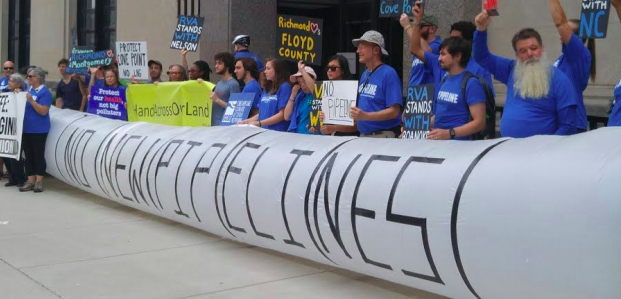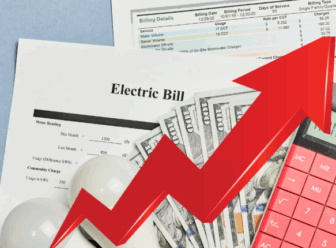Last week, Governor Ralph Northam signed the Virginia Clean Economy Act into law, making Virginia the first Southern state with a goal of going carbon-free by 2045. Thanks to the bill, Virginia’s energy future looks a lot cleaner.
The future for gas, on the other hand, is a lot less rosy.
The VCEA floors it on clean energy, taking Virginia from nearly zero to 100 in a matter of years. It mandates that the state’s biggest utility, Dominion Energy, switch entirely to renewable energy by 2045. Appalachian Power, which serves far southwest Virginia, must go carbon-free by 2050. It requires Dominion to build 16,100 megawatts of onshore wind and solar energy, and it proclaims up to 5,200 MW of offshore wind by 2034 to be in the public interest.
The General Assembly also passed a bill this year allowing Virginia to join the Regional Greenhouse Gas Initiative (RGGI), a regional carbon-trading program now in place from Maine to Virginia. With Virginia joining RGGI, all fossil fuel generating plants will be required to pay for the right to spew carbon pollution.
What might all of this mean for gas?
We got an early sign earlier this month when Dominion asked its regulator, the State Corporation Commission, to relieve it of a requirement to model new gas plants. In December 2018, the utility was planning for eight to 13 new gas combustion turbines (a plan the SCC rejected because the company inflated electricity demand).
Today “significant build-out of natural gas generation facilities is not currently viable, with the passage by the General Assembly of the Virginia Clean Economy Act of 2020,” the company wrote in its filing.
You read that right. Their previous plans are no longer viable.
If additional gas plants aren’t viable in Virginia, then what’s the purpose of the Atlantic Coast and Mountain Valley pipelines?
Dominion’s primary argument for the ACP has been that “Virginia needs new pipeline infrastructure” for home heating, manufacturing, and electricity. “Demand for natural gas is growing,” Dominio CEO Tom Farrell continued in an October 2018 op-ed in the Richmond Times Dispatch. Likewise, MVP claims its gas is desperately needed.
Yet even before passage of the VCEA, the need for these pipelines was in question. Only about 13 percent of Mountain Valley’s gas was spoken for, with the destination for the remaining 87 percent “unknown.” And, in a brief before the U.S. Supreme Court, Virginia Attorney General Mark Herring argued that Virginia already had no demonstrated need for the expansion of fracked-gas infrastructure, with demand only projected to decrease in the foreseeable future.
Is Dominion on its way to walking away from the project?
One sign that Dominion might be on the way to abandoning the ACP is the fact that the company did not oppose HB167 (sponsored by Delegate Lee Ware), which is now law. This bill requires an electric utility that wants to charge customers for the cost of using a new gas pipeline to prove it can’t meet its needs otherwise, and that the new pipeline provides the lowest-cost option available to it. This bill makes cost recovery for the Atlantic Coast Pipeline–and the Mountain Valley Pipeline–much more difficult. Dominion’s acquiescence to the bill could be an indication that the company is preparing to fold up shop on this project.
With Virginia now on a path away from fossil fuels, the ACP and MVP are not needed to supply electricity to Virginians, if they ever were. Dominion and EQT should cancel their plans and move on.
Two other projects may also be on their way out under Virginia’s new commitment to reducing greenhouse gas emissions.
Developers are proposing two huge new gas plants only a mile away from one another in Charles City County. Neither the 1,600 MW Chickahominy Power Station nor the 1,050 C4GT plant plan to sell power to Virginia utilities; their target is the regional wholesale market. So, while the VCEA won’t force them to go green, they will have to pay to pollute under RGGI. This added cost, plus the permitting issues the plants are encountering, could persuade them to abandon their plans.
And, if the C4GT plant goes away, so too should Virginia Natural Gas’s plans for a gas pipeline and compressor stations to supply the plant, what we’re calling the Header Injustice Project.
All in all, gas is on its way out in Virginia. We only wish the companies had seen the writing on the wall before they started seizing land, cutting down precious trees, and clogging rivers and streams with sediment.





